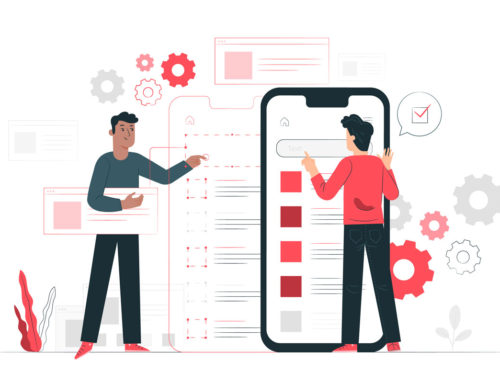Why Flutter is better than React Native.

Flutter has become one of the most hyped cross native frameworks since its stable release. Today, most of the companies are enthusiastic about flutter. It is mainly because one can develop applications for Android, iOS, Windows, Mac, Linux, and web from a single code-base. Despite fast development and flexible UI, many developers still want to hold on to the React Native.
What is Flutter?
Flutter, a UI software development kit by Google is known for building impressive, natively compiled apps for web, mobile, and desktop using a single code-base. Flutter was originally an open-source project for mobile application development. Later it was extended to support platforms like web, Windows, Google Fuchsia and Linux. You might be already aware of Google’s new operating system called Fuchsia. Here, Flutter is the primary source for developing its applications. Recently, Flutter has become more competitive with React Native and Xamarin.
Why Flutter Framework?
1. Quick Development Framework
Flutter is faster than many other application development frameworks. The “hot reload” feature, lets you experiment, build UIs, add/remove features, test and fix bugs faster. Thus reducing the overall app development time than any other Frameworks .
2. Native Performance
Flutter’s widgets incorporate all critical platform differences such as scrolling, navigation, icons and fonts. This provides a native performance experience on both iOS and Android. You really cant tell difference between performance of both frameworks
3. Elegant and Flexible UI
You can really build beautiful apps in Flutter. Also, the end-user experience is similar to native apps. Flutter has a layered architecture that lets you control every pixel on the screen. Thus, customization is very simple in Flutter. With its powerful composting capabilities, you can overlay and animate graphics, text, video, and other controls without any limitations.
You’ll also find a set of widgets that deliver pixel-perfect experiences on Android and iOS. It enables the ultimate realization of Material Design. Just in case you don’t know, Material.io is Google’s initiative to build beautiful, usable products with Material Components for digital experiences.
Useful resources: Material.io
4. Dart Language
Dart programming language is developed by Google and is meant for mobile, desktop, backend and web applications. It is a client-optimized language for fast performing apps on multiple platforms.
Dart is AOT (Ahead Of Time) compiled to fast, predictable, native code, allowing writing almost all of Flutter code in Dart. This makes Flutter extremely fast and customizable. Virtually, everything (including all the widgets) can be customized.
5. Important Flutter Tools
Flutter framework supports many different tools including Android Studio and Visual Studio Code. It also provides support for building apps from the command line. Dart DevTools, which is a new debugging tool, is more flexible and allows runtime inspection. You can also view logs, debug apps and inspect widgets for Flutter App Development.
- Widget inspector helps to visualize and explore the tree hierarchy. Flutter uses this for UI rendering.
- Timeline view helps you to monitor your application at a frame-by-frame level. You can also identify rendering and computational work in timeline view.
- Source-level Debugger: It lets you step through code, set breakpoints and investigate the call stack.
- Logging View displays events from the Dart runtime, application frameworks and app-level logging events.
Conclusion
Flutter is a newer framework and is quite popular with its stability and developing time. However, React Native and Flutter framework have their own pros and cons. But, both are actively good looking at the features they’re providing. React Native sounds like a tooling and dependency nightmare, while Flutter sounds like pleasure but still suffering growing pains. From my personal experience, many developers have expressed extreme frustration with React Native at times. Also, Developers have acknowledged that it’s a pleasure to develop apps in Flutter.
From personal experiences, We recommend Flutter.



